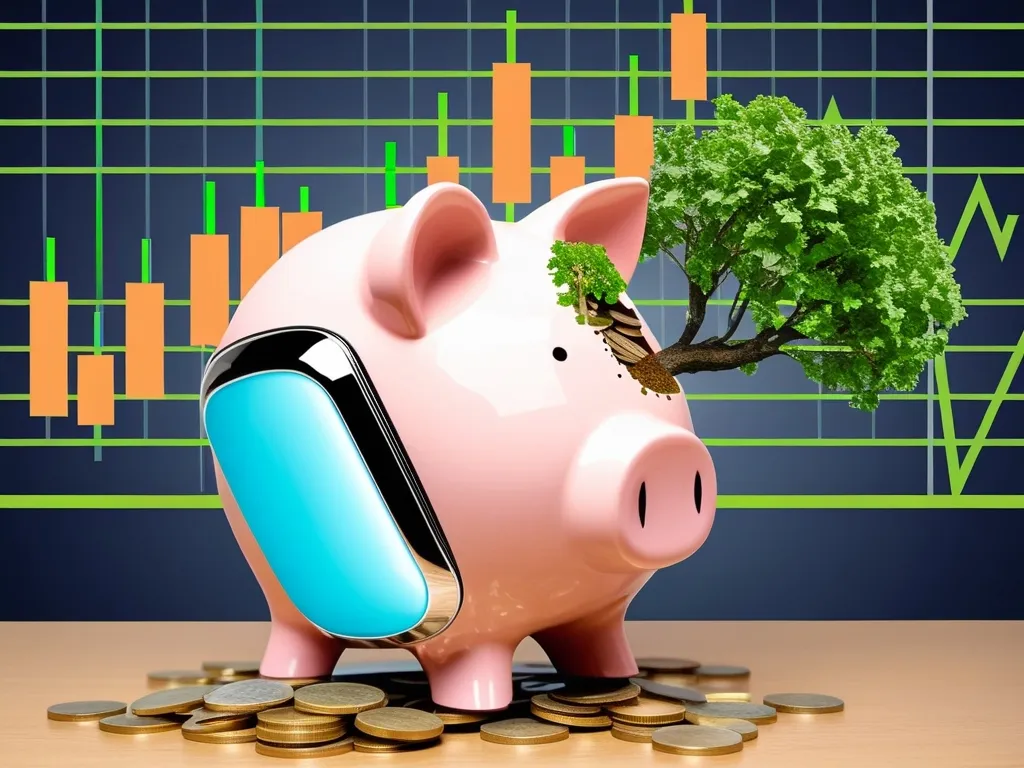When it comes to building wealth, many of us think we need to start with a significant amount of money. However, the concept of micro-investing has turned this notion on its head, making it possible to accumulate wealth with just spare change.
Imagine saving money the way you used to as a kid, but instead of a piggy bank, you’re investing in the stock market. Micro-investing platforms have made this process incredibly simple and accessible. Here’s how it works: you sign up for an account, link your debit card, and every time you make a purchase, the platform rounds up the amount to the nearest dollar and invests the difference.
For example, if you buy a cappuccino for $3.50, the platform will round it up to $4 and invest the $0.50. It might not seem like much, but over time, these small amounts add up. If you buy that same coffee every workday, you’ll have invested $10 by the end of the month and $120 by the end of the year. This method is so seamless that you won’t even notice the extra $0.50 missing from your account.
One of the key benefits of micro-investing is that it eliminates the traditional barriers to investing, such as high brokerage fees and minimum account requirements. With micro-investing, you can start with as little as $5, making it possible for nearly anyone to begin their investing journey. These platforms invest your money in fractional shares of stocks or exchange-traded funds (ETFs), which means you can own a piece of companies like Amazon or Google without having to buy a full share.
The power of compound interest is a crucial aspect of micro-investing. When you invest small amounts consistently, your investments generate returns, which are then reinvested to produce more earnings over time. This cycle accelerates the growth of your wealth significantly. For instance, if you invest just $5 a day with an average annual return of 7%, you could accumulate over $76,000 in 20 years. This principle is so powerful that Albert Einstein once referred to compound interest as the “eighth wonder of the world.”
Micro-investing platforms are designed to be user-friendly and automated, making the process of investing effortless. Apps like Acorns, Stash, and Robinhood offer features that allow you to invest your spare change automatically. For example, Acorns will round up your purchases and invest the difference into a diversified portfolio of ETFs. This hands-off approach eliminates the need for constant market monitoring, making it particularly appealing for those who may not have the time or expertise to actively manage their investments.
Another significant advantage of micro-investing is its ability to help you build a habit of saving early on. By integrating investing into your daily routines, you create a consistent flow of savings that can add up over time. According to a survey by Stash, more than 75% of its users found micro-investing to be a stress-free way to start investing. This approach not only helps you build wealth but also teaches you how to choose investments based on your goals, risk tolerance, and interests.
Micro-investing is versatile and can be used to meet various financial goals. Whether you’re saving for an emergency fund, a vacation, a down payment on a house, or retirement, micro-investing provides a flexible way to grow your money. For short-term goals, investing in a low-risk portfolio can help accumulate funds with less exposure to market volatility. For long-term goals like retirement, a more aggressive portfolio with higher risk but potentially higher returns might be appropriate.
While micro-investing is an excellent way to start investing, it’s important to understand its limitations. It won’t lead you to retirement goals on its own; you’ll need to save more through other means, such as employer retirement plans and tax-advantaged accounts like traditional and Roth IRAs. Most experts recommend saving between 10 and 20 percent of your income for retirement planning and an emergency fund.
Despite these limitations, micro-investing has revolutionized the way individuals approach wealth-building. It has made investing accessible and manageable for people from all walks of life. By breaking down barriers and leveraging the power of small, consistent investments, micro-investing offers a pathway to financial security and growth.
To illustrate the potential of micro-investing, let’s consider a scenario where you save $50 a month for 10 years in a savings account with a 0% interest rate. At the end of 10 years, you’ll have $6,000, which actually has less intrinsic value due to inflation. However, if you invest $49 a month (after a $1 platform fee) for 10 years with an average annual return of 7%, you’ll end up with $8,580 before taxes and inflation. This difference highlights the power of micro-investing in generating returns that beat traditional savings vehicles.
Micro-investing platforms also offer educational resources to help users learn about investing. For instance, you might learn how to choose an ETF based on your goals, risk tolerance, and interests. This educational aspect is crucial because it empowers users to make informed investment decisions and understand the risks involved.
In conclusion, micro-investing is more than just a way to invest spare change; it’s a strategy for building wealth over time. By making investing simple, accessible, and automated, micro-investing platforms have opened the door to financial growth for everyone. Whether you’re a student, a professional, or anyone in between, micro-investing can be a valuable tool in your financial toolkit.
So, if you’re looking to start your investing journey but don’t know where to begin, consider giving micro-investing a try. It might just be the boost your financial game plan needs. Start small, be consistent, and watch your spare change grow into a substantial financial cushion over time.






